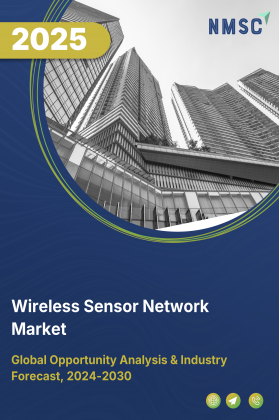
SiC Transistors Market by Type (Discrete SiC Transistors, Integrated SiC Modules), by Product (SiC MOSFET, SiC JFET and Others), by Technology (Planar Technology, Trench Technology), by Voltage Rating (Low Voltage, Medium Voltage and Others), by Application (Charging Systems, Switching & Signal Amplification, RF & High-Frequency Systems and Others), and by End User (Automotive, Energy & Power, Industrial & Manufacturing and Others) – Global Opportunity Analysis and Industry Forecast, 2025–2030
Industry Outlook
The global SiC Transistors Market size was valued at USD 4.2 billion in 2024, with an estimation of USD 4.88 billion in 2025 and is predicted to reach USD 10.34 billion by 2030 with a CAGR of 16.2% from 2025-2030. The sector is experiencing rapid growth, driven by the increasing demand for high-efficiency power electronics across industries such as electric vehicles, renewable energy, and industrial automation.
The adoption of electric vehicles is a major driver, as SiC transistors improve the efficiency of high-voltage power electronics, including inverters and onboard chargers, by reducing energy loss and supporting high-temperature operations, thereby enhancing vehicle range and enabling fast charging.
The rising need for semiconductors that handle high voltages, fast switching speeds, and harsh operating conditions is also fuelling the SiC transistors market growth, with applications in solar inverters, wind turbines, and industrial motor drives benefiting from smaller system sizes, improved thermal performance, and superior reliability.
Continuous advancements in SiC wafer fabrication, device design, and packaging have further enhanced performance while reducing production costs, making SiC transistors increasingly commercially viable and encouraging broader adoption across automotive, energy, and industrial sectors.
Growing Electric Vehicle Adoption Drives the Market Growth
The rapid adoption of electric vehicles is a key driver of the SiC transistors market demand. SiC transistors enhance the efficiency of high-voltage power electronics in EVs, such as inverters and onboard chargers, by reducing energy loss and supporting high-temperature operations.
According to the International Energy Agency, global electric car sales exceeded 17 million in 2024, reflecting the accelerating shift toward cleaner transportation. This growing demand for EVs is boosting the need for advanced semiconductor solutions like SiC transistors, which improve vehicle efficiency, extend driving range, and enable fast-charging capabilities.
Demand for High-Efficiency Power Electronics Boost Market Demand
The growing need for high-efficiency power electronics is driving the SiC transistors market. Industries such as renewable energy, industrial automation, and electric vehicles increasingly require semiconductors that handle high voltages, high temperatures, and fast switching speeds while minimizing energy loss.
SiC wafers meet these requirements by offering superior efficiency and reliability compared to traditional silicon-based devices. Applications like solar inverters, wind turbines, and industrial motor drives benefit from reduced power losses, smaller system sizes, and improved thermal performance, making SiC transistors a preferred choice in modern power electronics.
Advancements in Semiconductor Technology Fuels Market Expansion
Continuous advancements in semiconductor technology are fuelling the growth of the SiC transistors market. Improvements in SiC wafer fabrication, device design, and packaging have enhanced performance while reducing production costs, making SiC transistors more commercially viable.
These technological developments allow for higher voltage handling, faster switching speeds, and better thermal stability compared to traditional silicon-based transistors. As a result, industries such as electric vehicles, renewable energy, and industrial automation increasingly adopt SiC transistors to achieve greater energy efficiency, system miniaturization, and overall reliability in power electronic applications.
High Manufacturing Costs Restrains the Market Growth
One of the primary restraints of the SiC transistors market expansion is the high manufacturing cost of SiC devices. Producing SiC wafers and transistors involves complex fabrication processes, including high-temperature crystal growth and precision machining, which are more expensive than conventional silicon-based semiconductor manufacturing.
These higher costs limit adoption, especially in price-sensitive applications and emerging markets. Although advancements in technology are gradually reducing costs, the initial investment remains a barrier for widespread deployment in certain industries.
Expansion in Renewable Energy Applications Creates New Growth Opportunities
The growing global focus on renewable energy presents a significant opportunity for the SiC transistors market. SiC devices are highly efficient in high-voltage and high-temperature environments, making them ideal for applications in solar inverters, wind turbines, and energy storage systems.
As countries invest in clean energy infrastructure to meet sustainability goals and reduce carbon emissions, the demand for advanced power electronics like SiC transistors is expected to rise. This creates opportunities for manufacturers to develop specialized SiC solutions tailored to renewable energy systems, driving market growth in both established and emerging regions.
Market Segmentation and Scope of the Study
The SiC transistors market report is divided on the basis of type, product, technology, voltage rating, application, and end user. On the basis of type, the market is grouped into discrete SiC transistors and integrated SiC modules. On the basis of product, the market is segmented into SiC MOSFET, SiC JFET, SiC bipolar junction transistor, insulated gate bipolar transistors, and others. On the basis of technology, the market is categorized into planar technology and trench technology. On the basis of voltage rating, the market is divided into low voltage, medium voltage, high voltage, and ultra-high voltage. On the basis of application, the market is segmented into charging systems, switching & signal amplification, RF & high-frequency systems, protection & circuit control, and others. On the basis of end user, the market is categorized into automotive, energy & power, industrial & manufacturing, aerospace & defense, telecommunications & IT, consumer electronics, and others. Regional breakdown and analysis of each of the aforesaid segments includes regions comprising of Asia-Pacific, North America, Europe, and the Rest of the World (RoW).
Geographical Analysis
In North America, the rising adoption of electric vehicles (EVs) is a key driver of the SiC transistors market share. SiC power modules enhance the efficiency and performance of EV power electronics, including inverters and onboard chargers, by reducing energy loss and supporting high-temperature operation.
According to the International Council on Clean Transportation, the EV market in North America reached 1.56 million sales in 2024, representing a 10% share of all light-duty vehicle sales. This growing EV penetration, supported by government incentives and private sector investments in clean transportation, is boosting the demand for advanced SiC semiconductor solutions in the region.
In Europe, government initiatives to strengthen domestic semiconductor manufacturing are driving the growth of the market. Programs like the European Union’s Chips Act provide funding, incentives, and policy support to expand local semiconductor production, aiming to reduce dependence on imports and enhance technological self-sufficiency.
These investments encourage major companies, such as STMicroelectronics and Onsemi, to establish or expand SiC manufacturing facilities within the region. As a result, the availability of high-performance SiC transistors is increasing, supporting key applications in electric vehicles, renewable energy, and industrial automation, and ultimately driving market growth across Europe.
The rapid expansion of renewable energy infrastructure in the Asia Pacific region is a significant driver for the growth of the industry. Countries like China, India, Japan, and South Korea are heavily investing in solar and wind energy projects to meet their sustainability goals and reduce carbon emissions.
SiC transistors are crucial components in renewable energy systems, such as solar inverters and wind turbine converters, due to their high efficiency, thermal stability, and ability to handle high voltages. These characteristics enable more efficient power conversion and grid integration, making SiC transistors essential for the development and optimization of renewable energy infrastructure in the region.
In the Rest of the World, the growing adoption of industrial automation and robotics is a key driver for the SiC transistors industry. Manufacturing industries in regions such as Latin America, the Middle East, and Africa are increasingly integrating automated systems to improve operational efficiency, productivity, and precision.
SiC transistors are ideal for these applications due to their high switching speeds, low energy losses, and excellent thermal stability, enabling compact and efficient power electronics designs. As automation and robotics continue to expand in these regions, the demand for reliable and high-performance SiC power semiconductors are expected to rise, driving market growth across diverse industrial applications.
Strategic Innovations Adopted by Key Players
Key players in the SiC transistors industry are accelerating global expansion through upscale brand launches, service diversification, and strategic partnerships.
-
In September 2024, STMicroelectronics introduced its fourth-generation STPOWER silicon carbide MOSFET technology, marking a significant advancement in power semiconductor solutions tailored for electric vehicle traction inverters. This new generation aims to enhance power efficiency, density, and robustness, addressing the growing demand for high-performance components in EV powertrains.
-
In August 2024, Infineon Technologies AG inaugurated the first phase of its Kulim 3 facility in Malaysia, marking the commencement of the world's largest and most efficient 200mm silicon carbide power semiconductor fabrication plant. This USD 2.18 billion investment is poised to significantly bolster Infineon's position in market, addressing the escalating demand for high-performance power semiconductors in electric vehicles, renewable energy systems, and AI data centers.
Key Benefits
-
The report provides quantitative analysis and estimations of the sector from 2025 to 2030, that assists in identifying the prevailing SiC transistors market opportunities.
-
The study comprises a deep-dive analysis of the current and future SiC transistors market trends to depict prevalent investment pockets in the sector.
-
Information related to key drivers, restraints, and opportunities and their impact on the market is provided in the report.
-
Competitive analysis of the key players, along with their market share is provided in the report.
-
SWOT analysis and Porters Five Forces model is elaborated in the study.
-
Value chain analysis in the market study provides a clear picture of roles of stakeholders.
SiC Transistors Market Key Segments
By Type
-
Discrete SiC Transistors
-
Integrated SiC Modules
By Product
-
SiC MOSFET
-
SiC JFET
-
SiC Bipolar Junction Transistor
-
Insulated Gate Bipolar Transistors
-
Others
By Technology
-
Planar Technology
-
Trench Technology
By Voltage Rating
-
Low Voltage
-
Medium Voltage
-
High Voltage
-
Ultra-High Voltage
By Application
-
Charging Systems
-
Switching & Signal Amplification
-
RF & High-Frequency Systems
-
Protection & Circuit Control
-
Others
By End User
-
Automotive
-
Energy & Power
-
Industrial & Manufacturing
-
Aerospace & Defense
-
Telecommunications & IT
-
Consumer Electronics
-
Others
By Region
-
North America
-
The U.S
-
Canada
-
Mexico
-
-
Europe
-
The UK
-
Germany
-
France
-
Italy
-
Spain
-
Denmark
-
Netherlands
-
Finland
-
Sweden
-
Norway
-
Russia
-
Rest of Europe
-
-
Asia-Pacific
-
China
-
Japan
-
India
-
South Korea
-
Australia
-
Indonesia
-
Singapore
-
Taiwan
-
Thailand
-
Rest of Asia-Pacific
-
-
Rest of the World
-
Latin America
-
Middle East
-
Africa
-
Key Players
-
Infineon Technologies AG
-
onsemi
-
ROHM Co., Ltd.
-
Mitsubishi Electric Corporation
-
Toshiba Electronic Devices & Storage Corporation
-
Microchip Technology Incorporated
-
Robert Bosch GmbH
-
Fuji Electric Co., Ltd.
-
Qorvo, Inc.
-
China Resources Microelectronics Limited
-
Sanan Integrated Circuit Co., Ltd.
-
Vishay Intertechnology, Inc.
Report Scope and Segmentation
|
Parameters |
Details |
|
Market Size in 2025 |
USD 4.88 Billion |
|
Revenue Forecast in 2030 |
USD 10.34 Billion |
|
Growth Rate |
CAGR of 16.2%from 2025 to 2030 |
|
Analysis Period |
2024–2030 |
|
Base Year Considered |
2024 |
|
Forecast Period |
2025–2030 |
|
Market Size Estimation |
Billion (USD) |
|
Growth Factors |
|
|
Countries Covered |
28 |
|
Companies Profiled |
15 |
|
Market Share |
Available for 10 companies |
|
Customization Scope |
Free customization (equivalent to up to 80 working hours of analysts) after purchase. Addition or alteration to country, regional, and segment scope. |
|
Pricing and Purchase Options |
Avail customized purchase options to meet your exact research needs. |

















 Speak to Our Analyst
Speak to Our Analyst

























